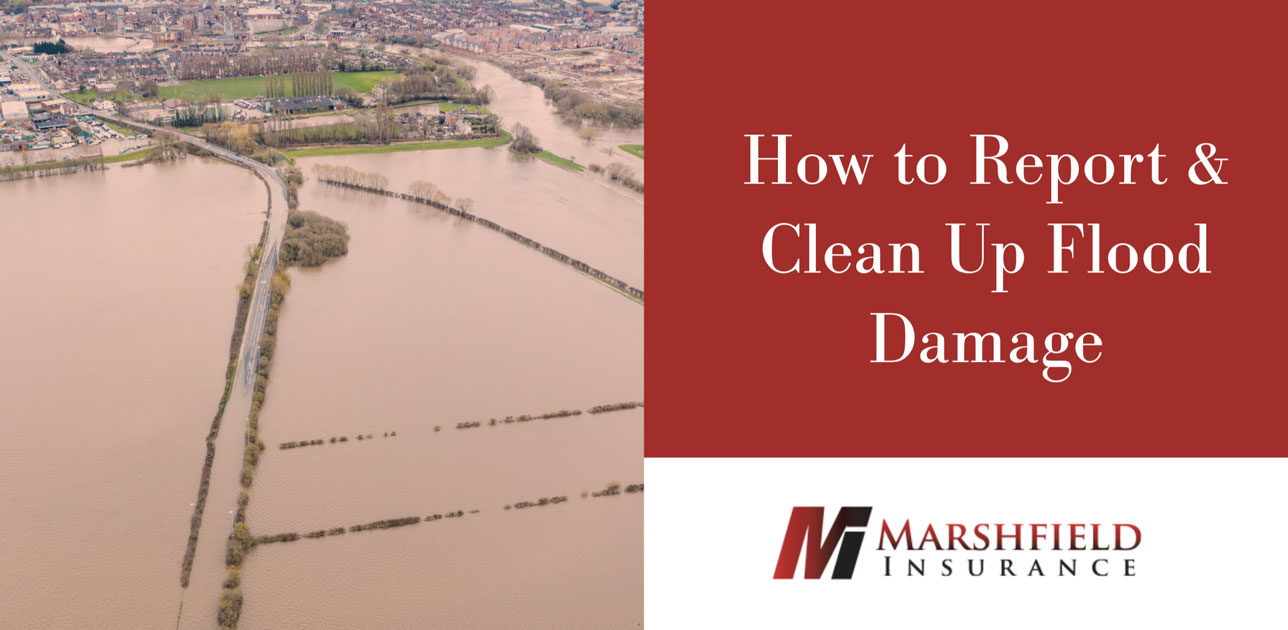Add Your Heading Text Here
How to Report and Clean Up Flood Damage
Floods can originate from various situations, including heavy rainfall, rapid snowmelt, overflowing bodies of water and broken water mains. Given how easily such incidents can occur and the potentially devastating damage they may inflict on your property, it’s important to be aware of how to report and clean up flood-related damages.
How to File a Flood Insurance Claim
Flood insurance can help you manage the financial ramifications of these damaging events, so knowing how to navigate the claims process is essential.
Consider the following steps:
– Report your losses.
Contact your insurance agent as soon as possible following a flood to initiate your claim.
– Document damage.
Take photos and videos as evidence of your losses, and maintain serial numbers of any valuable items as well as receipts from purchases of various belongings.
– Meet with your adjuster.
After filing a claim, your insurance company will dispatch a claims adjuster to inspect the situation. Be sure to meet with this person, verify their identity and save their contact information.
– Seek repairs.
You may need to hire a repair company or contractor to work on your home following a flood. Be sure to include your insurance adjuster in the conversation before making any final decisions.
– Review offer.
If your insurance company approves your claim, review the payout carefully to ensure completeness and accuracy.
– Appeal result (if necessary).
Should your claim be denied, you should contact your insurance company to learn more about their decision. You can also appeal with the Federal Emergency Management Agency within 60 days of the denial or file a lawsuit within 12 months.
– Cleaning Up Your Property
Although filing a flood insurance claim can assist with property damage costs, you may still need to figure out how to get your home back into a safe and functional condition after a flood.
Never reenter your home until it’s absolutely safe to do so. Check for structural damage to ensure you will not be trapped inside a collapsing area. Avoid turning your electricity back on until a professional has inspected the property and deemed it safe to do so. Wear long sleeves, sturdy or waterproof footwear, and plastic or rubber gloves while cleaning or inspecting your home. Beware of debris, including broken glass, nails, and other sharp or potentially harmful objects.
Document damage to your property using photographic and video evidence, including serial numbers of larger appliances and valuable items. Attempt to reduce moisture levels, temperature and humidity in your home to limit mold growth potential. Should you encounter mold, wear protective gear, including gloves, goggles and a face mask.
Retain samples of materials damaged by floodwaters, including carpets, upholstered furniture and wallpaper. Be cautious when enlisting the assistance of outside parties, such as contractors, and be sure to verify their qualifications and information, as scammers may abound following a flood.
We’re Here to Help
Contact us today to learn more about flood insurance and how you can best clean up your home and resume a sense of normalcy following this type of event.
This is for informational purposes only. It should not be construed as legal, safety or insurance advice. © 2024 Zywave, Inc. All rights reserved.

